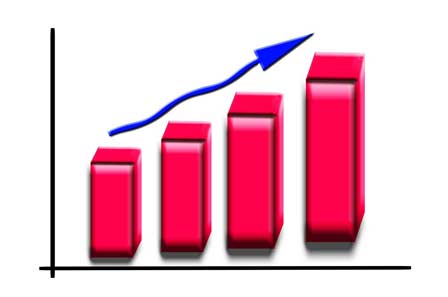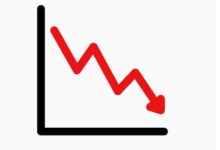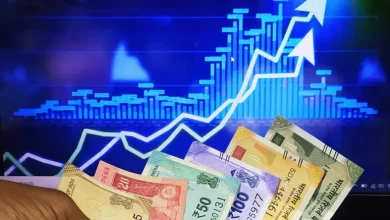India’s GDP could grow upto 8% by FY2017-18 according to World Bank reports

South Asia, now the fastest-growing region in the world, could take greater advantage of cheap oil to reform energy pricing
Driven by a strong expansion in India, coupled with favorable oil prices, economic growth in South Asia is expected to accelerate. The region is among the greatest global beneficiaries from cheap oil, as all countries in it are net oil importers. In the last quarter of 2014 South Asia was already the fastest-growing region in the world, a World Bank report said.
According to the twice-a-year South Asia Economic Focus report, regional growth is projected to steadily increase from 7 percent in 2015 to 7.6 percent by 2017 through maintaining strong consumption and increasing investment. Given India’s weight in regional Gross Domestic Product (GDP), the projections reflect to a large extent India’s expected growth acceleration, driven by business-oriented reforms and improved investor sentiment.
The decline in oil prices has been reflected in the domestic prices of oil products to different extents across the region. The pass-through exceeded 50 percent for most oil products in Pakistan, but was nil in Bangladesh.
Together with favorable food prices, cheaper oil has contributed to a rapid deceleration of inflation. South Asia went from having the highest inflation rate among developing regions to having the lowest in barely one year. In March 2013, the Consumer Price Index (CPI) of the region had increased by 7.3 percent year-on-year, compared to 1.4 percent in March 2015.
External vulnerabilities have receded, the report shows. Current account balances are strong in most countries. Capital inflows to India have increased from 1.9 to 3.4 percent of GDP, although more volatile portfolio investments account now for a greater share of the total. International reserve buffers have been built across the region, including in Pakistan which is now out of the danger zone.
However, the export performance of the region has disappointed. After a promising rebound last year, exports are now slowing down. By end 2014, export growth was close to zero across the region.
“The biggest oil price dividend to be cashed in by South Asia is one yet to be earned, but it is not one that will automatically transit through government or consumer accounts” said World Bank South Asia Chief Economist Martin Rama. “Cheap oil gives the opportunity to rationalize energy prices, reducing the fiscal burden from subsidies and contributing to environmental sustainability”, he added.
The report notes that India has already taken encouraging steps to decouple international oil prices from fiscal deficits and to introduce carbon taxation to address the negative externalities from the use of fossil fuels. The challenge will be to stay the course in the event of oil price hikes – something that may well happen in the medium term.
“Savings from reduced subsidy bills could be used to address the crying needs of the region in terms of infrastructure, basic services and targeted support for the poor”, said World Bank Vice President for South Asia Annette Dixon. The report shows that households in the region stand to gain from lower oil prices, both directly through lower energy spending and indirectly through faster growth. But except for kerosene, richer households spend more in oil products, and stand to gain more.
In Afghanistan, a successful political transition needs to be supplemented by a stable security environment as well as by adequate management of the current fiscal crisis. Agriculture and services are likely to be the key drivers of growth in the immediate future. With stability, growth could increase from 2.5 percent in 2015 to 5.0 percent the year after.
In Bangladesh, the economy is maintaining macroeconomic stability, despite the political turmoil, structural constraints, and global volatility. The protracted political unrest has reduced growth by one percentage point. Growth in 2015 is now projected at 5.6%. However, a recovery driven by strong domestic demand is possible. It will require a continuation of single-digit inflation, an improved investment climate, and above all political stability.
Economic activity in Bhutan is expected to gain momentum with real GDP growing at 6.7 percent in 2015, driven by new hydropower construction and innovative tourism measures such as “Visit Bhutan 2015.”
In India, GDP growth is expected to accelerate to 7.5 percent in Fiscal Year 2015/16. It could reach 8.0 percent in FY2017/18, on the back of significant acceleration of investment growth to 12 percent during FY2016-FY2018. The country is attempting to shift from consumption- to investment-led growth, at a time when China is undergoing the opposite transition.
Nepal’s growth will remain in the 4.5 to 5 percent range. The fact that consumption remains the country’s main growth driver leaves it vulnerable to a slowdown in remittance growth. To improve its growth performance the country needs to boost infrastructure development to support private sector investment.
In Pakistan, a gradual recovery to around 4.6 percent growth by 2016 is aided by low inflation, and fiscal consolidation. Further progress depends on tackling key growth constraints including frequent power cuts, a cumbersome business environment, and low tax revenue.
In Sri Lanka, growth is expected to decline to 6.9 percent in 2015 due to slowing construction activity. This trend is partially set off by consumption growth thanks to increased public sector wages and higher disposable income. With competitiveness remaining a challenge, the new government is reassessing the previous investment-led growth model.









